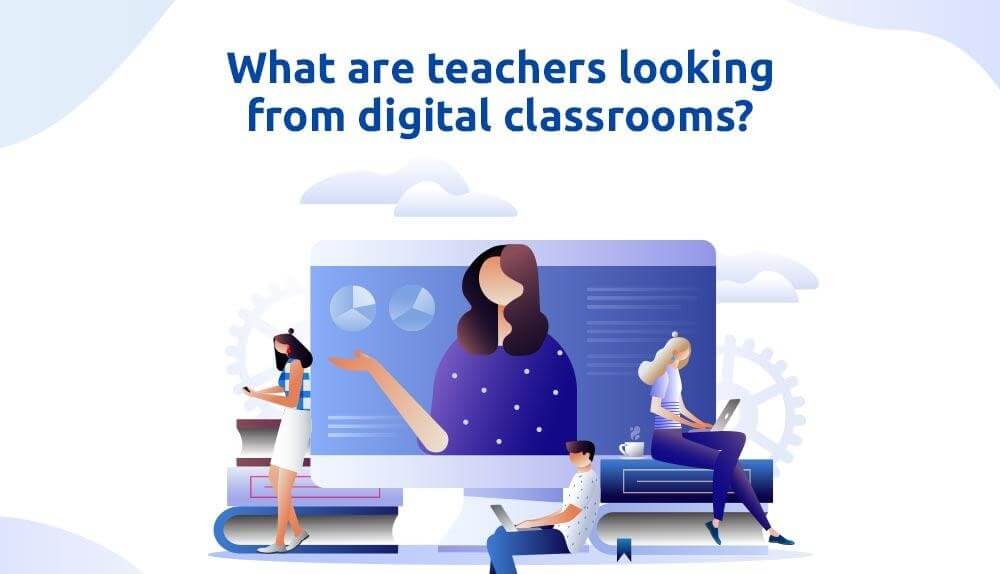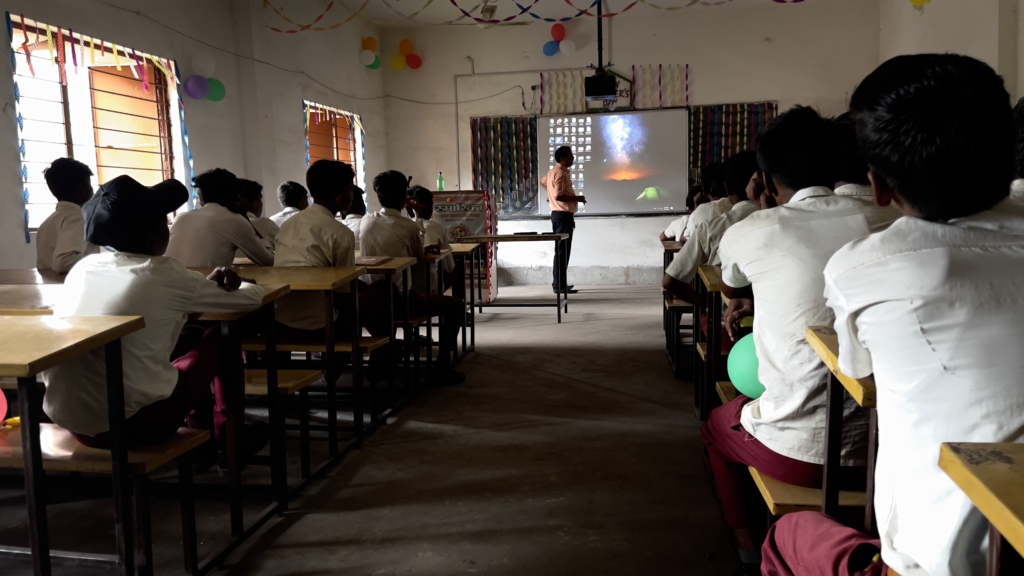Blogs
What are teachers looking from digital classrooms ?

Digital classrooms of the future will be technology-enabled
Are you a teacher or an administrator? If you are, then we’re sure you’re already very familiar with how education is constantly evolving. In fact, one of the few constants in education is change itself. Technology is one of the main forces influencing how education is changing today.
Whether you’re an educator, a student, or a parent, you’re probably aware that learning is everywhere, including from digital learning solutions like smartphones, laptops, tablets, and apps. It is the responsibility of the teachers to adapt the way they teach by incorporating digital learning solutions.

Educational institutions must prioritize the digital classrooms
To maintain relevance in today’s digital world, educational institutions must keep up with the latest innovations and embrace digital teaching methods.
This is especially true as students are increasingly expecting digital learning solutions in the classroom. Digital schools in India allow any student to learn from anywhere in the country. According to some reports, digital schools in India are the future of education and learning.
Digital classrooms are not just the future of education; they are the present.
Imagine a space where students have the opportunity to explore their passions and pursue their dreams. This is what a digital classroom will look like in the future. Let's dive a little deeper and explore the future of the digital classroom with this mind map.
The mind map below represents an ideal digital classroom setup with psychology, technology, and social learning dynamics in place:
Envision a classroom that is completely immersed in technology. Every student has access to digital learning solutions with an internet connection, whether it's a laptop, tablet, Chromebook, or another device, and the instructor is constantly on the lookout for new apps and resources to keep the curriculum current. Not only that, but you may work with other instructors at your school and throughout the world, and you're always learning new things to share with your pupils. This may sound like a far-fetched vision, yet it is a reality in today's classrooms!
Consider 21st-century learning skills for both the student and the instructor. By picturing these learning skills, we may gain a sense of what a teacher and a student need to know, be able to do, and ask to perfect these abilities in the learning environment:
Discover the top 10 expectations of educators
Outlined below are the top 10 expectations from instructors for digital classrooms are shown below. This ranking is based on data from a survey developed by educational technology specialist Nik Peachey.
- Teachers want to know how to navigate various types of digital settings. They are especially interested in flipped learning as well as other online and hybrid learning methods. This enables them to give tailored learning content.
- Teachers agree that video classes are crucial for introducing new technology. It enables them to quickly teach children how to use the newest working approach. This generation will use tutorials to get quick results.
- Teachers appreciate evaluations of several sorts of video-creation applications, as well as tips on how to utilize the app for learning purposes. For example, when learning a language, having an app that allows a student to explain his topic via video might be beneficial. The student instantly employs and practices a variety of abilities. An excellent method for the students to observe the many presentations. You may give the typically dull lectures that we all know a new digital look.
- Teachers want their students to be able to create original video content for practical purposes and to take pride in their accomplishments. Isn't it wonderful to showcase your work utilizing cutting-edge technologies and motivate your colleagues?
- Teachers seek advice on how to make the most of the video's visual components. Ideas and suggestions for using video in digital narratives. Digital storytelling is the process of narrating a tale using digital visuals. With the use of an interactive whiteboard, the instructor may create and present a tale to the class.
- Teachers seek advice on how to start using video technology in their classroom education through action plans and other measures.
- Teachers desire a toolkit of practical software for tasks like downloading, cutting, and editing videos.
- Teachers need training on how to use digital technology, particularly during installation. These studies may be completed online using a learning management system, webinars, and live classes (MOOCs).
Over time, teachers will develop engaging and impactful digital learning experiences with an emphasis on creating innovative ways to use various digital learning solutions. Whether it’s through games, activities, or technology, these ideas can be shared with other teachers to improve their lessons. No wonder, digital schools in India are witnessing a new era of growth and prosperity.




